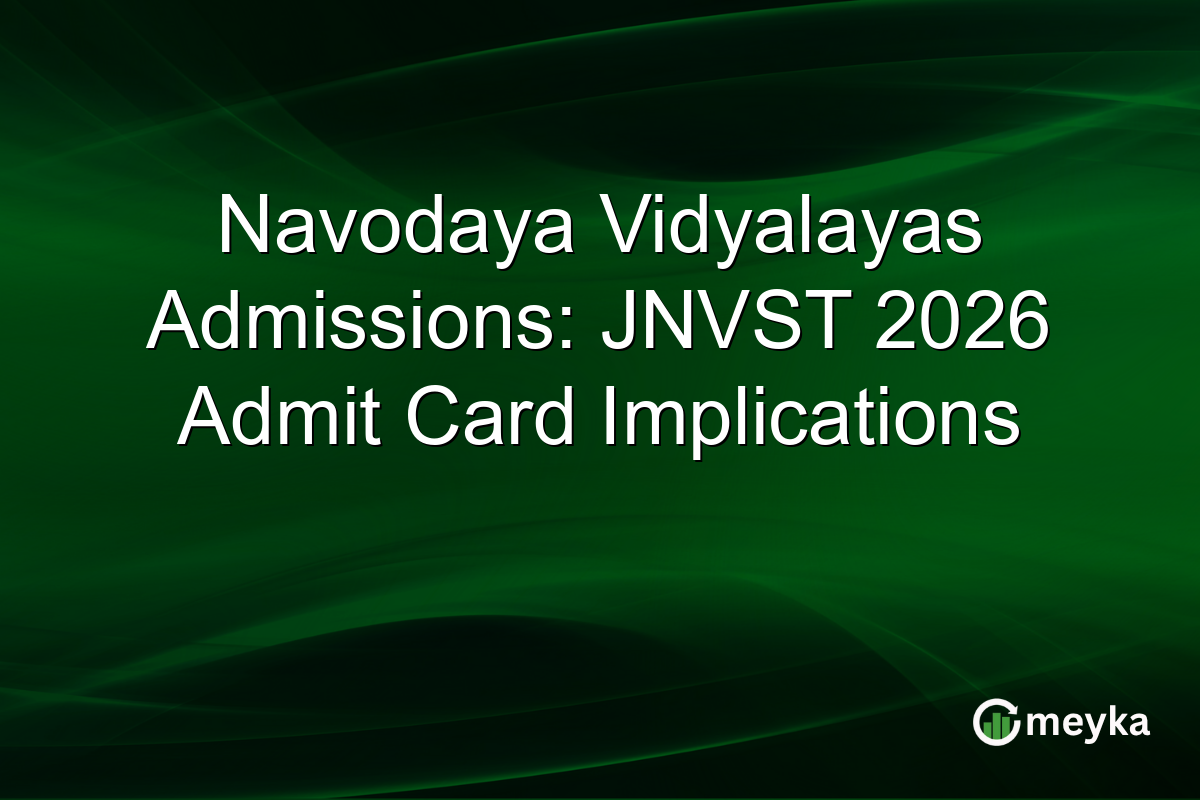Navodaya Vidyalayas Admissions: JNVST 2026 Admit Card Implications
The release of the JNVST 2026 admit card marks a significant milestone for thousands of aspirants eager to secure a spot in Navodaya Vidyalayas. These schools are pivotal in offering quality education across rural India. Over two million students have applied this year, highlighting the system’s expansive impact on education. As the entrance exam approaches, understanding the implications of the admit card release is crucial for students and educators alike.
Understanding JNVST Admit Card 2026
The release of the JNVST admit card 2026 signifies the readiness of candidates to undertake the entrance exam, crucial for Navodaya Vidyalayas admissions. The card serves not only as an entry requirement but also as a document that ensures fair play in the examination process. It carries details about exam centers, timings, and essential instructions to be followed on the exam day. This demonstrates the pivotal role the admit card plays in maintaining the integrity and organization of the JNV entrance exam.
Impact on Navodaya Vidyalayas Admissions
Admission into Navodaya Vidyalayas is highly competitive due to the quality education they offer, particularly to students from rural backgrounds. The JNVST admission process therefore plays a crucial role in shaping the educational landscape in India. With the release of the admit card, candidates from across the country can prepare diligently, knowing their exam schedules and locations. Consequently, this preparation phase supports fairness and equal opportunity, key pillars of Navodaya education.
Challenges and Opportunities for Students
For many students, navigating the JNV entrance exam is a significant challenge due to limited resources and preparation tools in rural areas. However, the availability of the JNVST admit card 2026 well in advance allows students to strategize their preparation. Resources available through government and educational platforms can aid in bridging these gaps. This period also opens a window for educational interventions, ensuring that students from underprivileged regions have access to necessary support, reinforcing the core objectives of the Navodaya system.
Future Implications for Educational Equity
The ongoing commitment to Navodaya Vidyalayas admissions reflects a broader intent toward educational equity in India. The JNVST 2026 is a step forward in aligning with national educational goals that aim to uplift rural education standards. As the educational framework evolves, we can anticipate further enhancements in the admission processes and support systems for students, reinforcing the schools’ role as catalysts of change in rural education. Future policies must continue to support this mission to expand access and improve educational outcomes.
Final Thoughts
The JNVST 2026 admit card is more than just a formality; it represents hope and future potential for millions of students. Its release enables candidates, particularly those from rural areas, to envision a brighter educational path. As Navodaya Vidyalayas continue to stand as beacons of quality education, it’s essential that the support systems and resources remain robust to enhance accessibility and fairness. As the exam approaches, a concerted effort from educators, policymakers, and communities will ensure the transformation and growth of India’s rural educational landscape.
FAQs
The JNVST 2026 admit card is vital for exam entry and ensures students have details about exam centers and timings. It upholds the integrity of the admission process.
Navodaya Vidyalayas provide quality education, promoting equity by offering educational opportunities to rural students, thus impacting the broader educational system positively.
Students often face resource constraints and lack of preparation tools, especially in rural areas. However, access to digital resources and government support can mitigate these challenges.
Disclaimer:
The content shared by Meyka AI PTY LTD is solely for research and informational purposes. Meyka is not a financial advisory service, and the information provided should not be considered investment or trading advice.






